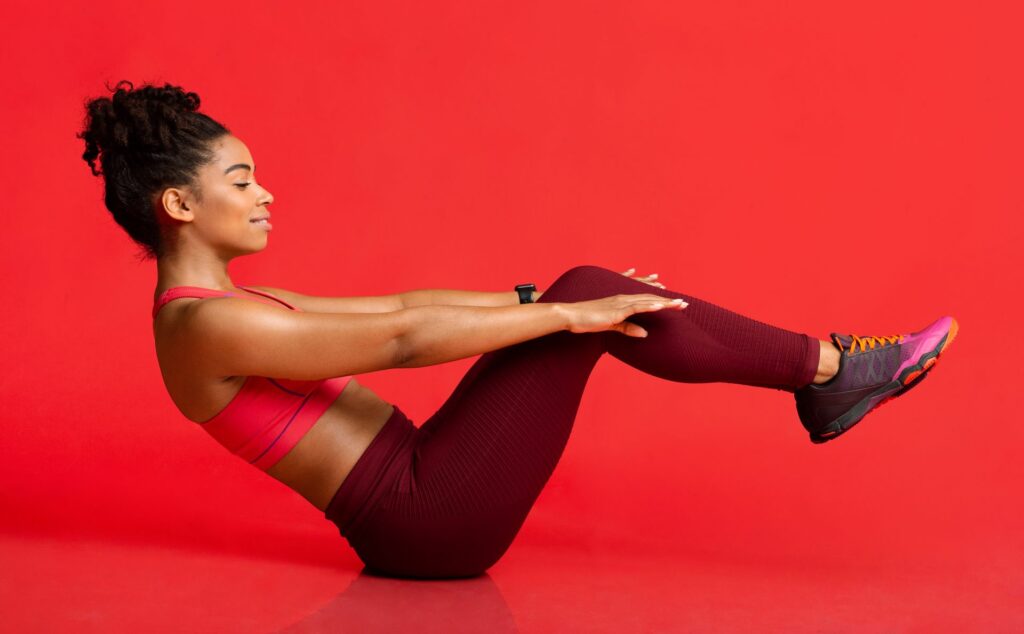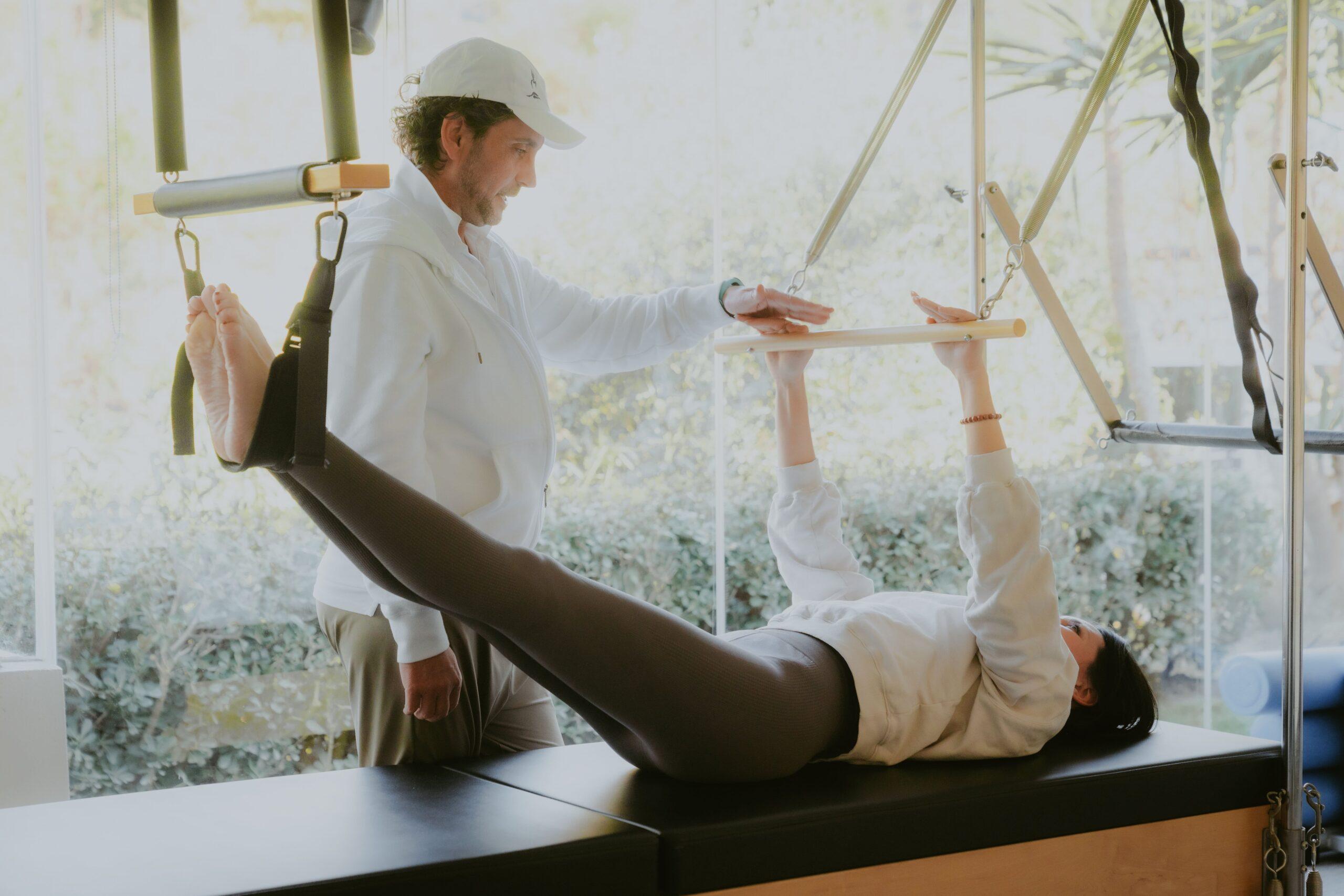10 Essential Pilates Exercises for Core Strength and Flexibility
Pilates, often referred to as the “art of controlled movement,” is a fitness system that has gained immense popularity for its ability to improve core strength, flexibility, and overall body awareness. Its targeted exercises, mindful movement principles, and balanced approach make it an ideal practice for individuals of all fitness levels. Whether you’re seeking to alleviate back pain, enhance athletic performance, or simply enjoy a more flexible and agile body, Pilates can be your trusted companion on your journey toward optimal wellbeing.
Pilates Exercises and Core Strength: A Perfect Match
Now, let’s uncover why Pilates exercise is particularly effective in building core strength:
1. Targeted Muscle Engagement: Pilates exercises are designed to specifically target the muscles of the core. Many traditional Pilates exercises, such as the Hundred, Roll-Up, and Teaser, engage multiple core muscle groups simultaneously, providing a comprehensive workout.
2. Mindful Movement: Pilates places a strong emphasis on controlled, precise movements. This mindfulness ensures that you’re working your core muscles effectively, without relying on momentum or overworking other muscle groups.
3. Balance of Flexibility and Strength: Pilates incorporates both flexibility and strength-building exercises, creating a well-rounded approach to core fitness. As you strengthen your core, you also improve its flexibility and range of motion.
4. Progressive Challenge: Pilates offers a progression of exercises, allowing individuals to start at their current fitness level and gradually advance. This makes it accessible for beginners and challenging for advanced practitioners.
Pilates Exercises and Flexibility: A Dynamic Duo
Pilates is uniquely suited to enhancing flexibility for several reasons:
- Balanced Approach: Pilates workouts include a combination of stretches and strength-building exercises. This balance prevents overstretching and promotes safe flexibility gains.
- Controlled Stretching: In Pilates, stretches are performed with precision and control. This controlled stretching allows you to target specific muscles and maintain proper alignment.
- Mind-Body Connection: Pilates encourages a strong mind-body connection, helping you become more aware of your body’s sensations and limitations. This mindfulness can guide you in safely pushing your flexibility boundaries.
- Breathing Techniques: Proper breathing techniques in Pilates enhance relaxation and facilitate deeper stretches, promoting flexibility without strain.
Pilates Exercises for Core Strength and Flexibility
Whether you’re new to Pilates or a seasoned practitioner, these ten essential exercises will help you develop a strong core and enhance your flexibility. So, roll out your mat, and let’s get started!
1. The Hundred:
- Lie on your back with legs raised.
- Pump your arms up and down while breathing deeply.
- Engages your core and gets your blood flowing.
The Hundred is not just an introduction to your Pilates workout but a fantastic exercise to boost your heart rate. The synchronized breath and arm pumps challenge your abdominal muscles and warm up your body. It’s an excellent exercise to kickstart your Pilates routine.

2. Roll-Up:
- Start lying down, then roll up into a seated position.
- Strengthens your abdominal muscles and improves spinal flexibility.
The Roll-Up is a classic Pilates exercise that targets your entire core, particularly the rectus abdominis (your “six-pack” muscles). It also works on spinal articulation, promoting a flexible and strong back. Start with a controlled roll and gradually increase your range of motion as you progress.
3. Single Leg Circles:
- Lie on your back, extend one leg up, and draw circles in the air.
- Enhances hip mobility and challenges your core stability.
Single Leg Circles are fantastic for hip mobility and core control. As you draw circles with your extended leg, your core muscles must work to stabilize your pelvis. This exercise promotes greater hip flexibility and can alleviate hip tightness caused by prolonged sitting.
4. The Saw:
- Sit tall with legs wide apart.
- Rotate your torso to reach one hand toward the opposite foot.
- Works on spinal rotation and stretches your hamstrings.
The Saw is a multi-functional exercise that combines spinal rotation with hamstring stretching. It targets your obliques and challenges your balance. Remember to engage your core and keep your back straight as you twist.
5. Plank:
- Hold a push-up position on your forearms or hands.
- Builds core strength, stability, and overall body control.
The Plank is a Pilates staple that offers a full-body workout. It primarily engages your core but also activates your shoulders, arms, and legs. Holding a Plank strengthens your abdominal muscles, stabilizes your spine, and improves posture.
6. Bridge:
- Lie on your back with knees bent and lift your hips off the ground.
- Activates glutes and lower back muscles while promoting spinal flexibility.
The Bridge exercise targets your glutes (buttocks) and lower back muscles. It’s excellent for strengthening the posterior chain while also promoting spinal flexibility. Variations like the Single-Leg Bridge add an extra challenge.
7. Spine Stretch Forward:
- Sit with legs extended, then hinge at the hips to reach forward.
- Improves hamstring flexibility and stretches the spine.
The Spine Stretch Forward is a seated exercise that enhances hamstring flexibility and spinal mobility. As you reach forward, focus on lengthening your spine, and feel the stretch in your hamstrings. It’s an excellent exercise to include in your routine, especially if you spend a lot of time sitting during the day.
8. Swan Dive:
- Lie facedown with arms extended in front of you, then lift your chest and arms.
- Strengthens the back and opens the chest.
The Swan Dive exercise is a fantastic way to strengthen the muscles along your spine, particularly the erector spinae. As you lift your chest and arms, you also open up your chest and shoulders, which can help counteract the effects of poor posture from sitting at a desk.
9. Side Plank:
- Support your body on one forearm or hand with feet stacked.
- Targets obliques, promoting core stability and strength.
Side Planks are exceptional for strengthening your oblique muscles, which play a crucial role in stabilizing your spine and maintaining proper posture. You can modify this exercise by placing your bottom knee on the ground if needed, gradually progressing to the full Side Plank.
10. Teaser:
- Start lying down, then roll up into a V-sit position.
- Challenges your core strength, balance, and control.
The Teaser is a challenging exercise that requires advanced core strength and control. It’s the perfect exercise to work toward as you progress in your Pilates practice. The controlled movement of rolling up into a V-sit engages your entire core and tests your balance.
Incorporate these Pilates exercises into your regular routine to experience the remarkable benefits of improved core strength and enhanced flexibility. Remember to focus on proper form and controlled movements for the best results. Whether you’re looking to enhance your athletic performance or simply want to feel more balanced and agile in your daily life, Pilates can be your path to achieving these goals. So, keep practicing, and enjoy the journey toward a stronger, more flexible you!

